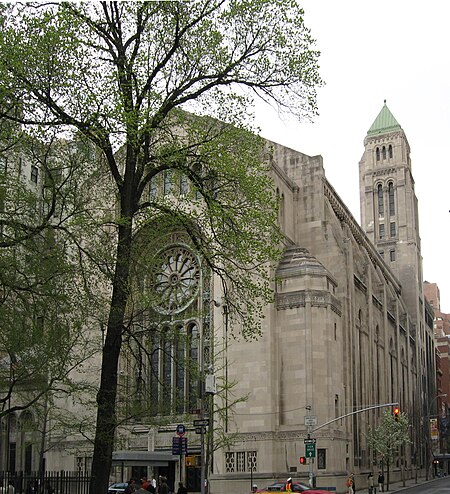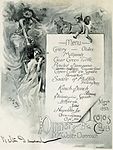Congregation Emanu-El of New York
1845 establishments in New York (state)1929 establishments in New York (state)Classical Reform JudaismCommons category link is locally definedGerman-Jewish culture in New York City ... and 8 more
Leopold Eidlitz buildingsReform synagogues in New York CityReligious organizations established in 1845Romanesque Revival architecture in New York CityRomanesque Revival synagoguesSynagogues completed in 1929Synagogues in ManhattanUpper East Side

Congregation Emanu-El of New York is the first Reform Jewish congregation in New York City and, because of its size and prominence, has served as a flagship congregation in the Reform branch of Judaism since its founding in 1845. The congregation uses Temple Emanu-El of New York, one of the largest synagogues in the world. The congregation currently comprises approximately 2,000 families and has been led by Senior Rabbi Joshua M. Davidson since July 2013. The congregation is located at 1 East 65th Street on the Upper East Side of Manhattan. The Temple houses the Bernard Museum of Judaica, the congregation's Judaica collection of over 1,000 objects.
Excerpt from the Wikipedia article Congregation Emanu-El of New York (License: CC BY-SA 3.0, Authors, Images).Congregation Emanu-El of New York
East 65th Street, New York Manhattan
Geographical coordinates (GPS) Address Nearby Places Show on map
Geographical coordinates (GPS)
| Latitude | Longitude |
|---|---|
| N 40.768025 ° | E -73.969691666667 ° |
Address
Temple Emanu-El
East 65th Street 1
10021 New York, Manhattan
New York, United States
Open on Google Maps










